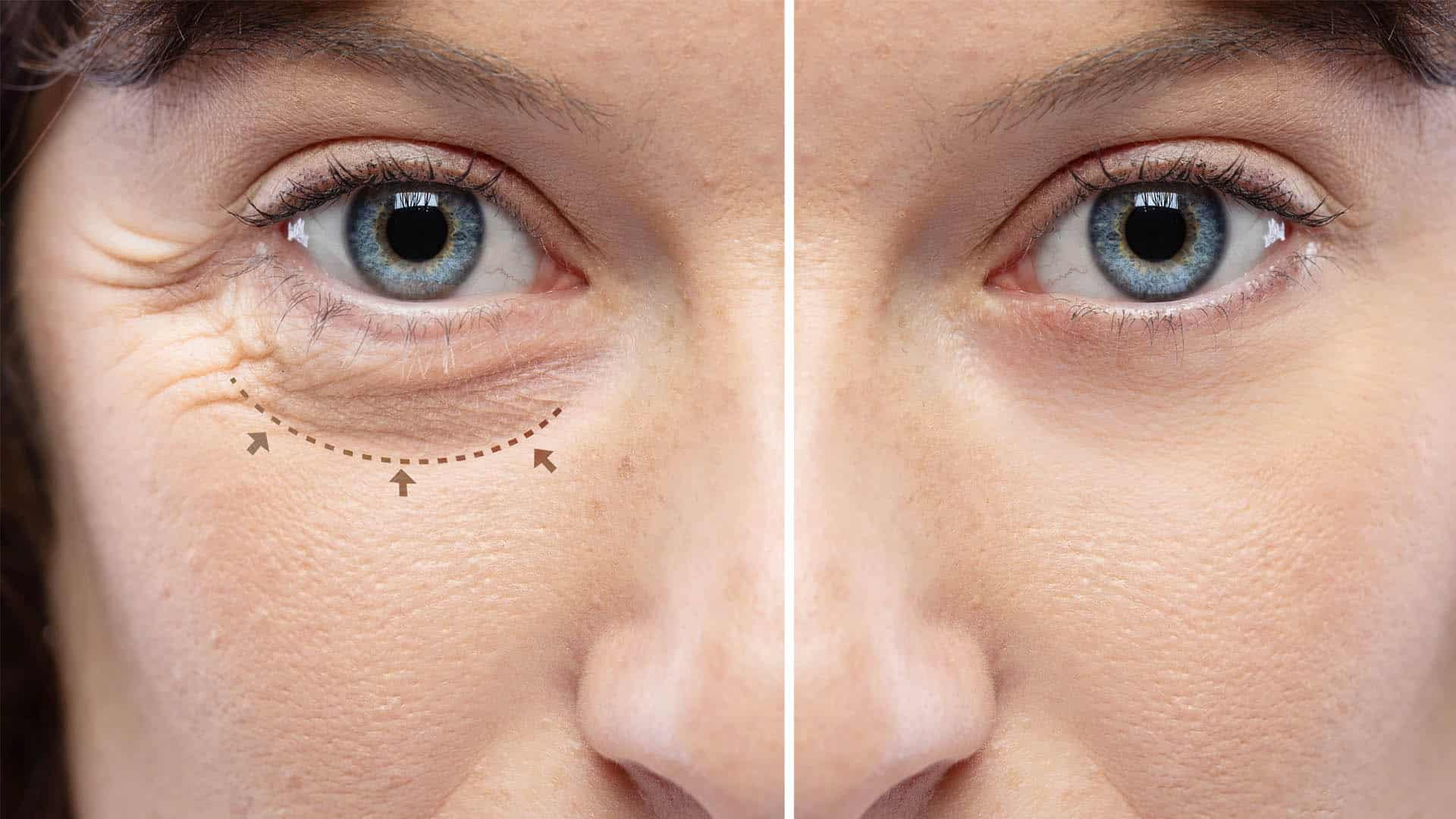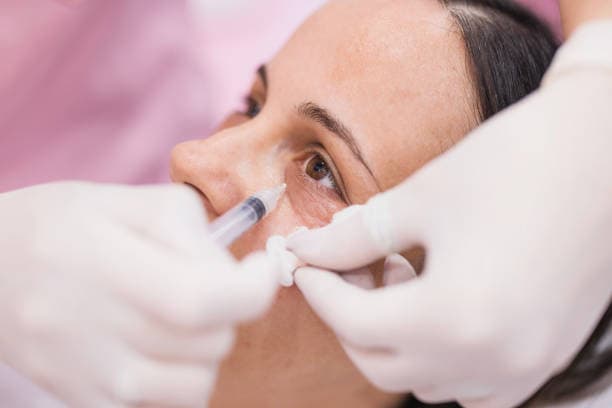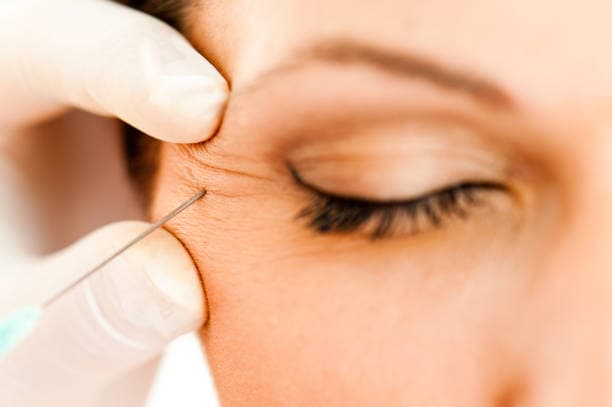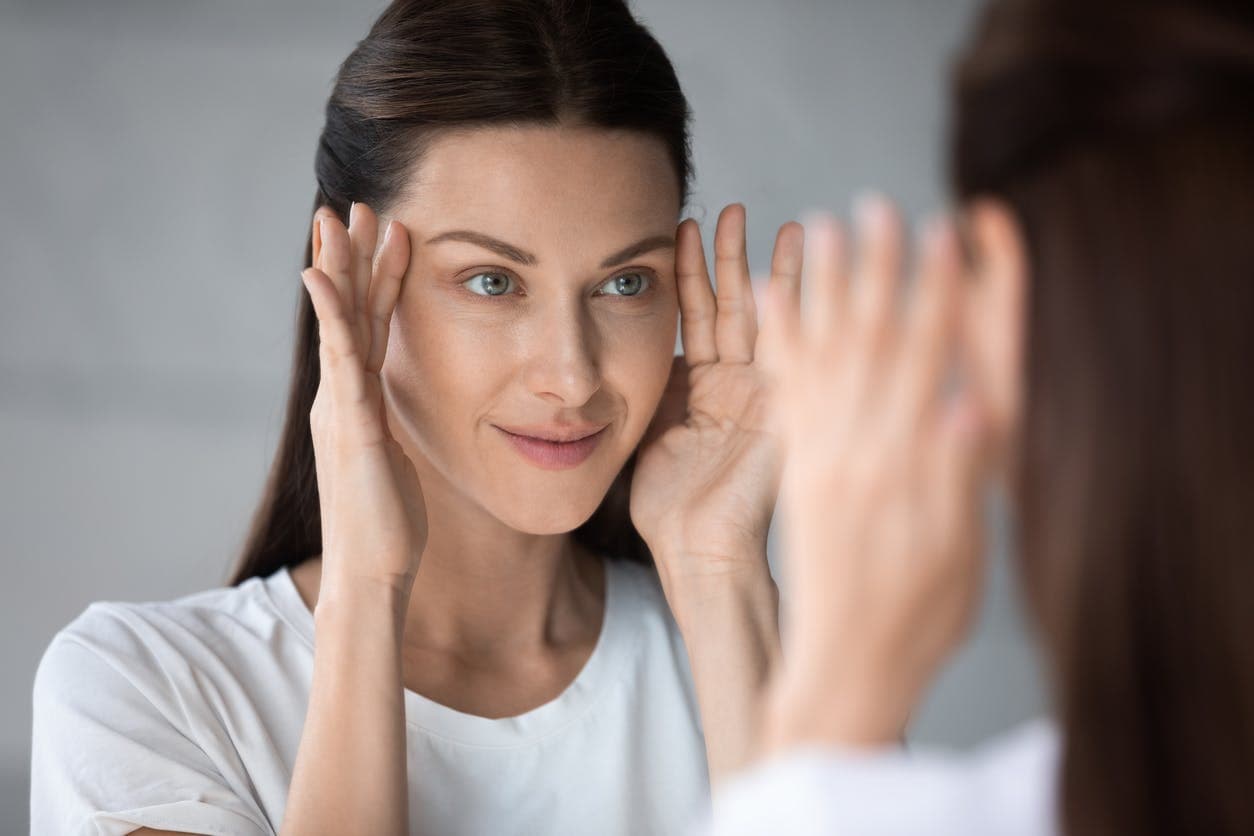Filler vs. Blepharoplasty
When considering under-eye rejuvenation, tear trough fillers and blepharoplasty offer distinct approaches. Tear trough fillers are a non-surgical option that involves injecting hyaluronic acid to add volume and smooth out hollows, providing quick results with minimal downtime. However, these results are temporary, typically lasting between 6 to 18 months. In contrast, blepharoplasty is a surgical procedure that removes excess skin and fat from the eyelids, addressing more significant under-eye bags and sagging. This procedure requires a longer recovery period but offers long-lasting, often permanent results. The choice between the two depends on the severity of the under-eye concerns and the desired longevity of the results.

What is Blepharoplasty?
Blepharoplasty, commonly known as eyelid surgery, is a surgical procedure designed to improve the appearance of the eyelids. This procedure can be performed on the upper eyelids, lower eyelids, or both, depending on the patient's needs. As we age, the skin around our eyes loses its elasticity, and the muscles supporting the eyelids weaken. This can lead to excess skin and fat gathering above and below the eyelids, resulting in sagging eyebrows, droopy upper lids, and bags under the eyes. Blepharoplasty addresses these issues by removing or repositioning excess skin, muscle, and fat to create a more youthful and rested appearance.
The procedure begins with the surgeon making precise incisions along the natural creases of the eyelids to minimize visible scarring. For upper eyelid surgery, the incision is typically made within the natural fold of the eyelid, allowing the surgeon to remove or reposition excess tissue. In lower eyelid surgery, the incision is usually made just below the lash line or inside the lower eyelid, enabling the surgeon to remove or redistribute fat and tighten the skin. The incisions are then closed with sutures, which are removed after a few days.
Blepharoplasty can be performed for both cosmetic and functional reasons. Cosmetically, it helps reduce the appearance of under-eye bags, smooth out wrinkles, and eliminate drooping skin, giving the eyes a more youthful and alert look. Functionally, it can improve vision in individuals whose sagging upper eyelids obstruct their field of vision. This dual benefit makes blepharoplasty a popular choice for those seeking both aesthetic enhancement and practical improvement.
Recovery from blepharoplasty typically involves some swelling and bruising, which can last for a few weeks. Patients are advised to keep their head elevated, apply cold compresses, and avoid strenuous activities during the initial recovery period. Most people can return to their normal activities within 10 to 14 days. It's important to follow the surgeon's post-operative care instructions to ensure proper healing and optimal results.

Blepharoplasty Pros & Cons
Pros of Blepharoplasty
Enhanced Appearance: One of the primary benefits of blepharoplasty is the significant improvement in the appearance of the eyes. The procedure can make the eyes look more youthful and alert by eliminating droopy eyelids and under-eye bags. This can lead to an overall rejuvenated facial appearance, boosting self-confidence.
Improved Vision: For individuals with severe sagging skin that obstructs their vision, blepharoplasty can be a functional necessity. By removing the excess skin, the surgery can restore a full field of vision, enhancing daily activities like reading and driving.
Long-Lasting Results: The results of blepharoplasty are generally long-lasting. While the natural aging process will continue, the improvements from the surgery can last for many years, especially when combined with a healthy lifestyle and proper skincare.
Minimal Scarring: The incisions made during blepharoplasty are typically small and strategically placed in the natural creases of the eyelids, making any scarring minimal and often barely noticeable.
Cons of Blepharoplasty
Surgical Risks: As with any surgical procedure, blepharoplasty carries risks such as infection, bleeding, and adverse reactions to anesthesia. It's crucial to choose a qualified and experienced surgeon to minimize these risks.
Recovery Time: Post-surgery, patients can expect swelling, bruising, and discomfort around the eyes. These symptoms usually subside within a couple of weeks, but full recovery can take several months. During this time, patients need to avoid strenuous activities and follow their surgeon's care instructions closely.
Potential Complications: Some patients may experience complications such as dry eyes, difficulty closing the eyes, or asymmetry. In rare cases, there might be a need for revision surgery to correct any issues.
Cost: Blepharoplasty can be expensive, and since it's often considered a cosmetic procedure, it may not be covered by insurance. This can make it a significant financial investment for many individuals.

What is a Filler?
Tear trough filler is a popular cosmetic treatment designed to address the hollowing and dark circles that can appear under the eyes, often giving a tired or aged appearance. This area, known as the tear trough, is the groove between the lower eyelid and the upper cheek. As we age, the skin loses volume and elasticity, making these troughs more pronounced. Tear trough fillers aim to rejuvenate this area by adding volume and smoothing out the contours.
The most commonly used substance for tear trough fillers is hyaluronic acid, a naturally occurring substance in the body that helps maintain skin hydration and volume. Hyaluronic acid fillers, such as Juvéderm and Restylane, are favored for their ability to integrate smoothly with the skin and provide natural-looking results. The procedure involves injecting the filler into the tear trough area using a fine needle or cannula. This process typically takes about 15 to 30 minutes and is performed by a trained medical professional, such as a dermatologist or plastic surgeon.
Candidates for tear trough fillers are generally those who have mild to moderate hollowing under the eyes and are looking for a non-surgical solution. It is important to have realistic expectations and understand that while fillers can significantly improve the appearance of the tear troughs, they may not completely eliminate dark circles if they are caused by pigmentation issues rather than volume loss.

Filler Pros & Cons
Pros of Fillers
Immediate Results: One of the most appealing aspects of tear trough fillers is the immediate improvement in the appearance of the under-eye area. Patients often notice a reduction in hollowness and dark circles right after the procedure.
Minimally Invasive: Unlike surgical options such as blepharoplasty, tear trough fillers are minimally invasive. The procedure involves a few small injections and typically takes about 15 to 30 minutes, with minimal downtime.
Natural-Looking Results: Hyaluronic acid fillers, commonly used for this treatment, integrate well with the skin, providing a natural and smooth appearance. This helps in achieving a refreshed look without appearing overdone.
Temporary and Adjustable: The effects of tear trough fillers last between 6 to 18 months, depending on the type of filler and individual factors. This temporary nature allows patients to adjust their treatment over time as their needs and preferences change.
Boosts Confidence: By reducing the appearance of tiredness and aging, tear trough fillers can significantly boost a person's confidence and self-esteem.
Cons of Fillers
Potential Side Effects: Common side effects include swelling, bruising, and redness at the injection site, which usually subside within a few days. However, more serious complications, such as infection, allergic reactions, or the formation of lumps, can occur, though they are rare.
Not Suitable for Everyone: Tear trough fillers are most effective for individuals with mild to moderate hollowness. Those with severe under-eye bags or significant skin laxity may not achieve the desired results and might need surgical intervention instead.
Temporary Results: While the temporary nature of fillers can be a pro, it can also be a con for those looking for a long-term solution. Regular maintenance treatments are required to sustain the results, which can be costly over time.
Risk of Overfilling: If not performed by an experienced professional, there is a risk of overfilling, which can lead to an unnatural appearance or even worsen the under-eye area’s look.
Cost: The procedure can be expensive, and since it is a cosmetic treatment, it is typically not covered by insurance. The cost can add up, especially considering the need for periodic touch-ups.

The difference between Filler & Blepharoplasty
Tear trough fillers and blepharoplasty are two distinct approaches to rejuvenating the under-eye area, each with its own benefits and considerations. Tear trough fillers involve the injection of hyaluronic acid-based substances to add volume and smooth out the hollows under the eyes. This non-surgical procedure is quick, minimally invasive, and offers immediate results with minimal downtime. However, the effects are temporary, typically lasting between 6 to 18 months, and may require regular maintenance treatments. On the other hand, blepharoplasty is a surgical procedure that involves the removal or repositioning of excess skin and fat from the eyelids. This method provides a more permanent solution to issues like sagging skin and under-eye bags, with results that can last for many years. While blepharoplasty requires a longer recovery period and carries the risks associated with surgery, it is often more effective for severe cases of eyelid aging and puffiness.

Conclusion
In conclusion, both tear trough fillers and blepharoplasty offer effective solutions for under-eye rejuvenation, but they cater to different needs and preferences. Tear trough fillers provide a quick, minimally invasive option with immediate results and minimal downtime, making them ideal for those seeking a temporary fix for mild to moderate under-eye hollowness. Conversely, blepharoplasty offers a more permanent solution, addressing severe sagging and puffiness through surgical intervention, albeit with a longer recovery period and higher risks. The choice between these treatments ultimately depends on individual concerns, desired outcomes, and the willingness to undergo surgery.
Read More